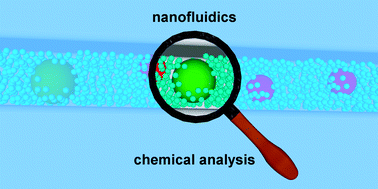Nanofluidics in chemical analysis†
Abstract
Nanofluidic architectures and devices have already had a major impact on forefront problems in chemical analysis, especially those involving mass-limited samples. This critical review begins with a discussion of the fundamental flow physics that distinguishes nanoscale structures from their larger microscale analogs, especially the concentration polarization that develops at nanofluidic/microfluidic interfaces. Chemical manipulations in nanopores include nanopore-mediated separations, microsensors, especially resistive-pulse sensing of

- This article is part of the themed collection: From microfluidic applications to nanofluidic phenomena

 Please wait while we load your content...
Please wait while we load your content...